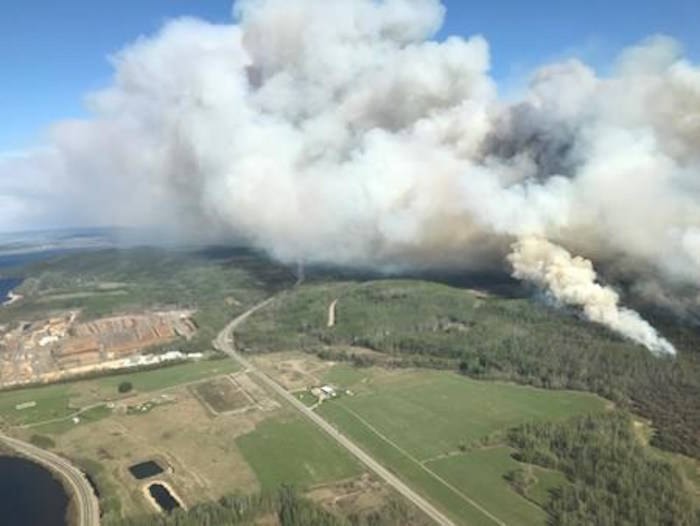The Omineca Express reached out to Lindsay King, FireSmart Educator for the Regional District of Bulkley-Nechako, to know her role; what residents can do to be more ‘fire smart’ and some common mistakes people make during the wildfire season.
Q: Can you talk about the FireSmart Program? As a FireSmart educator for the Regional District, what does your role encompass?
A: The FireSmart program is a non-profit organization dedicated to educating the public on how they can make their homes and communities resilient to wildfire. Wildfires are a natural occurrence in the Regional District of Bulkley-Nechako, with some easy steps and a little bit of work, we can significantly reduce the risk of wildfires spreading into urban areas. As a FireSmart Educator, my role is to promote this program by conducting free residential assessments throughout the rural areas of the region and online webinars on the Regional District of Bulkley-Nechako website, www.rdbn.ca, or call 250-692-3195 and ask for me, Lindsay King.
Q: The fire season that is approaching is forecasted to be hot and dry. How can residents be ‘fire smart’ this season?
A: One of the easiest ways that homeowners can become FireSmart is by keeping their properties clean of debris such as leaves, needles, and dead growth from gutters, gardens and underneath decks. It’s also important to use FireSmart materials (such as Class A rated roofing) when constructing new homes or renovating. Move fuel sources (such as patio furniture and firewood stacks) at least 10km away from your home.
In your gardens avoid highly combustible vegetation like cedar and juniper; instead opt for species that are fire resistant. Characteristics of fire-resistant species are moist, supple leaves, they do not accumulate much dead growth, and produce little sap/resin. Spacing trees three metres apart, and pruning the branches from the bottom 2m of trees is a good way to FireSmart larger properties.
Q: What are some common mistakes people make during wildfire season? And what should they be mindful of?
A: Some common mistakes people make are thinking that FireSmarting their property will be expensive, or they don’t need to be FireSmart because they do not live next to a forested area, or waiting until the last minute to make an exit plan.
Many FireSmart activities are free or relatively inexpensive, and only require a little manual labor. Wildfires typically spread by flying embers, which makes them unpredictable. Living in the Regional District of Bulkley-Nechako, you are surrounded by significant forest cover, so FireSmarting your property is something everyone should be concerned about. It’s also important to plan for the worst case scenario — have an evacuation plan in place, so you won’t be caught off-guard.
For more information about the FireSmart program, visit the Regional District of Bulkley-Nechako’s website at www.rdbn.bc.ca and there you can sign up for a free home assessment or online webinar as well.
READ MORE: Prescribed burns on hold as B.C. prepares for COVID-19 wildfire season
Aman Parhar
Editor, Vanderhoof Omineca Express
aman.parhar@ominecaexpress.com
Like us on Facebook and follow us on Twitter
